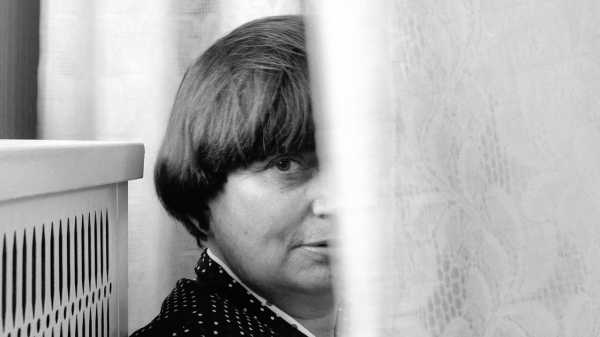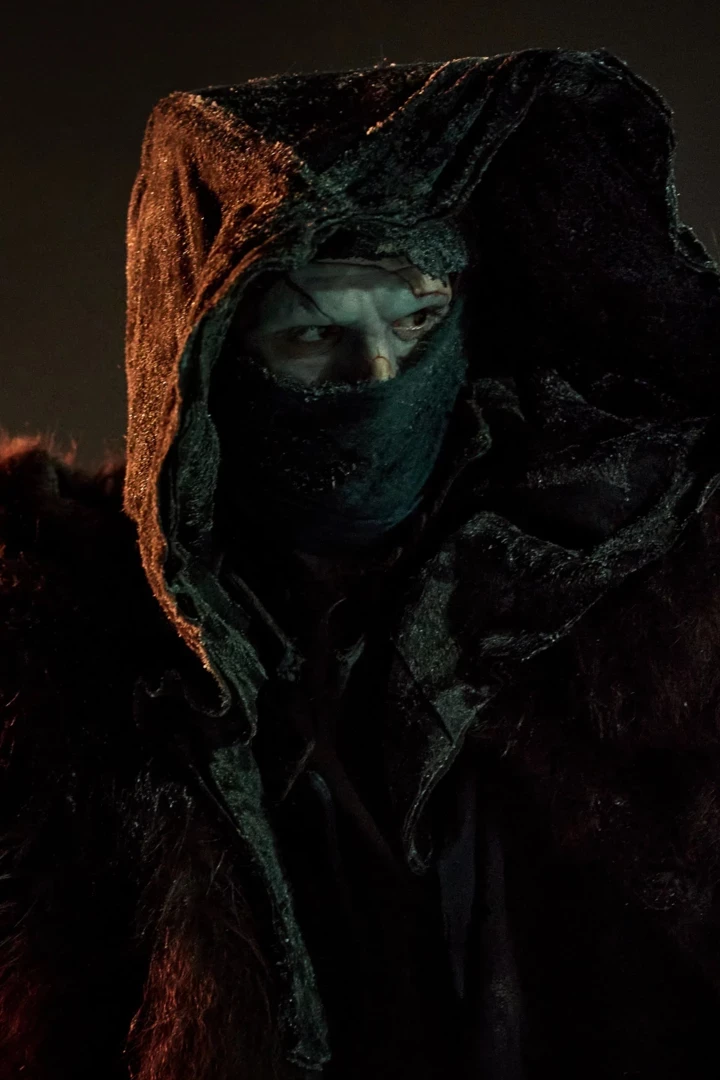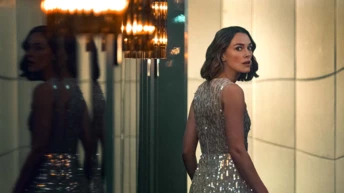
Save this storySave this storySave this storySave this story
With classic filmmakers, a biography is a peek behind the scenes, whether a debunking or an astonishment—a view of the human element that made grand achievements possible. With modern filmmakers, whose work is already inescapably personal, a biography is a virtual extension of the films they’ve made. Agnès Varda is a central modern filmmaker, and Carrie Rickey’s fervently detailed and briskly narrated new biography, “A Complicated Passion” (Norton), reveals that the coalescence of Varda’s art and life was even more thoroughgoing than is apparent from the films themselves. The story that Rickey tells imparts a retrospective sense of destiny—a vision of a career that ran long enough, and changed enough along the way, as to cast the entire scope of Varda’s lifelong activity in a cinematic light. Even the details of her pre-cinematic youth seem to line up in a pattern that leads inevitably to movies.
Varda was born in a suburb of Brussels in 1928, the third of five children; her father, an engineer, and her mother, an enthusiast of the arts, named her Arlette. Her fate was forged in the early stages of the Second World War. In 1940, in the wake of the German invasions of Belgium and France, the family joined the millions fleeing to the South of France, which remained unoccupied for the time being, settling in the small seaside town of Sète. There, Varda quickly formed essential connections—to the locale (where she would make her first film, “La Pointe Courte,” in 1954) and to several of its residents, notably the Schlegel family, who played a major role in her artistic life. Soon after the German Army took over the town, in late 1942, the Vardas moved to Occupied Paris. After the Liberation of Paris, in 1944, Varda immersed herself in the arts. She studied art history, archeology, and painting; audited classes in philosophy; and devised a self-directed program of literary study. She also attended night classes in photography—a burgeoning interest, which her mother encouraged with the gift of a professional-grade camera (a Rolleiflex, purchased secondhand from a photographer for Détective magazine).
In keeping with this impulse of self-formation, Varda soon changed her name from Arlette to Agnès (but she didn’t do so formally). Impatient with her studies, she flung herself into an independent and freethinking way of life that was itself a kind of art. In the summer of 1947, at nineteen, she dashed off to the island of Corsica, where she lived among a group of fishermen, rowing their boats and helping them hoist their nets. In 1948, she got a foothold in the artistic beau monde: the prominent theatre director Jean Vilar, a Sète native married to Varda’s friend Andrée, née Schlegel, invited her to lend a hand at his fledgling theatre festival, in Avignon. She became the Festival d’Avignon’s unofficial photographer and started to earn a living photographing weddings and christenings and bar mitzvahs while pursuing the certification needed to obtain a career as a professional.
In 1951, Vilar became head of the Théâtre National Populaire, in Paris, and hired Varda as its photographer. While working for him both there and in Avignon, she came up with a strikingly original idea for making promotional stills for productions: in an effort to capture the essence of the dramas, Varda, in lieu of shooting rehearsals, decided to “restage the scene so it played to the camera.” In the process, Rickey writes, she “developed and refined an array of skills. She learned to find a defining image and how to ‘direct’ actors”—including such major ones as Gérard Philipe and Jeanne Moreau. In effect, Varda was in the movies before the movies were in Varda.
Varda was only twenty-three, but, as she recalled, “in a matter of months I acquired one of those ready-made reputations, so common in Paris, for skill and style.” A year earlier, her father, suddenly prosperous thanks to a crane design he patented, had offered to buy apartments for each of his five children. Varda instead bought two adjacent ramshackle storefronts in Montparnasse, both of which lacked indoor toilets. She renovated them and turned them into a combination living and studio space—and shared it with one of the Schlegel sisters, Valentine, a sculptor who was also, Rickey reports, her lover. (Valentine stayed until 1957; Varda lived and worked there for the rest of her life.) A friend and collaborator of the artist Alexander Calder and the photographer Brassaï, Varda was a part of the Parisian artistic whirl. Then in 1954, at twenty-five—having seen, she said, fewer than twenty-five films in her entire life—she decided to make a movie.
“La Pointe Courte,” named for an area in Sète that’s home to a fishing village, was largely self-financed and made on a minuscule budget. But it projected her into rarified company. She persuaded Alain Resnais (the future director of “Night and Fog” and “Hiroshima Mon Amour”) to edit it, and he introduced her to some of his friends, such as the then critics Jean-Luc Godard and François Truffaut. For bureaucratic reasons, “La Pointe Courte” had no commercial release, but special screenings won it acclaim within the film world and gained her a tenuous beginner’s entry into the business. If it failed to be acknowledged as the first film of the New Wave, it’s only because Varda was too far ahead of it. Other aspiring young French filmmakers, including her new friends, weren’t yet ready to follow in her footsteps. (Rickey writes, “When she knew the men a little better she realized that ‘their influences were movies.’ Hers, she said, were ‘paintings, books . . . life.’ ”) By the time their first films appeared, late in the decade, she was already in need of a relaunch, and she got it thanks to their successes.
The story of Varda’s life that emerges in “A Complicated Passion” is notable for her many acts of shrewd yet spontaneous audacity, for her acute artistic instinct combined with her keen practical judgment. Varda lived in a way that could seem reckless, but she made her impulses work. She was a personality, a star in private as well as in public, because she spoke fiercely and brilliantly, because she was self-deprecatingly whimsical, and because her intense alertness to the people and the situations she encountered was itself a form of creativity. The stories that Rickey brings to light are astounding. Varda made her first professional films in the late nineteen-fifties, with a pair of commissioned shorts—but, amid a dispute with their producer, lobbied to have one of them lose a prize that it was predicted to win. In 1958, she had a child, Rosalie Varda, with the theatre director and actor Antoine Bourseiller, yet had left him before Rosalie was born. Within months, she had entered a relationship with the filmmaker Jacques Demy, who was bisexual. They worked side by side, but not together; they married in 1962. (Rosalie told Rickey, “Jacques really raised me,” because he kept to business hours, whereas “Agnès wrote whenever.”)
“They had totally different ways of working,” said Rosalie, who as an adult assisted Demy as a costumer and Varda as assistant and producer. “Jacques really prepared everything in advance—the film, the script, the editing, everything was in his head. . . . Everything was prepared. With Varda, everything was fluid. She would always say, ‘Chance is my best assistant.’ ” With Demy, Rosalie said, “when the first day of shooting would arrive, we had practically already done the film, in a way.” But with Varda, “when we did the first day of shooting, we were throwing ourselves into the swimming pool.”
That’s how, in 1961, Varda made her second feature, “Cléo from 5 to 7,” which reinvigorated her career. She’d written a script for a high-budget film, to be shot in color in France and Italy, but her producer instead advised her to “make a little film in black-and-white that doesn’t cost more than $64,000.” She did so, filming solely in Paris, often within walking distance of her home studio, with a cast that included friends (Godard and Anna Karina) and quasi-family (none other than Bourseiller, in a co-starring role). The movie—a grim romance with a façade of gaiety, in which Cléo, a singer, wanders through Paris for an hour and a half while awaiting the results of a medical test for cancer—blends the intimate portraiture of a female artist with a probing documentary of Parisian street life and cultural activity. It was both a commercial and a critical success, and it placed Varda in the center of the new generation of French filmmakers.
Still, though Varda’s reputation was strong among cinephiles, she wasn’t known to the wider public, and like some others in her circle she often struggled to find financing for her work. In 1965, when one of her scripts was turned down by an official French agency, she angrily wrote another in a single weekend; it was awarded funding. She started shooting it just a few weeks later, and it became one of her most acclaimed films (“Le Bonheur”). Demy, meanwhile, had become internationally celebrated for “The Umbrellas of Cherbourg” (1964), and, when he was given a studio contract in Hollywood, Varda moved to Los Angeles with him. She wrote a script called “Peace and Love,” about the romance of an American actress and an activist French lawyer; it attracted Columbia Pictures’s interest, but the deal collapsed when a studio executive pinched her cheek and she slapped his arm away. Instead, she made some noteworthy short films, including a documentary about the Black Panthers, and then made an altogether looser and wilder feature, “Lions Love ( . . . and Lies),” which she shot rapidly, in early 1969, as a sort of metafictional dramatic diary, with a cast that included Viva, the filmmaker Shirley Clarke, the writers of the musical “Hair,” and, briefly, Varda herself.
While in the United States, Rickey reports, Varda read the work of such feminist writers as Shulamith Firestone, Germaine Greer, and Kate Millett. Back in Paris, Varda took part in the “Manifesto of the 343,” published in 1971, in which women who’d had abortions (then illegal in France) publicly admitted to doing so. Her activism led her to scrutinize the onscreen representation of women and to try to reform it. In 1972, she planned to make a musical, “My Body Is Mine,” involving a doctor who performs illegal abortions. She couldn’t find funding, but, as Rickey notes, she incorporated many of its elements into her 1977 film, “One Sings, the Other Doesn’t,” a tale of women’s friendship and feminist activism in the course of many years. Her feminism took practical forms, too. Rickey details how she made a point of hiring women for her production staff and crew, and asserts that, in fostering their careers, Varda “was also helping to change the face of the French film industry.”
Throughout her working life, Varda confronted feelings of failure in the face of practical difficulties. To be sure, most filmmakers have an archive full of unproduced scripts and unrealized ideas, but the combination of Varda’s unusual methods and her audacious subjects posed additional obstacles. So did her family life. She and Demy went back and forth between California and Paris. In early 1972, while she was in Paris, Demy was in California, reportedly living with a man named David Bombyk, but he came back to Paris when Varda found out that she was pregnant. Their son, Mathieu Demy, was born in 1972, and Varda decided that her next film needed to be one she could make while staying close to home. She accomplished that goal in an extreme fashion, shooting a documentary about the people and shops and cafés on the street where she lived. She’d long thought it appropriate that her street, Rue Daguerre, was named for one of the fathers of photography, and she shot the whole film, “Daguerréotypes” (1975), straying no farther than three hundred feet (the length of the electric cable for her equipment) from her home studio. Despite this knack for turning limitations to advantages, Varda felt she had achieved far too little since the mid-sixties. “I was also feeling the contradictions of my feminine condition,” she said, and declared that “there is only one solution and that is to be a kind of ‘superwoman’ and lead several lives at once and to not give in and to not abandon any of them—to not give up children, to not give up cinema, to not give up men if one likes men.”
In 1979, the family returned to California, joined by Mathieu, and soon Demy left to live again with Bombyk. Varda channelled her emotions into a film, “Documenteur,” about a woman who is raising her young son while confronting her breakup with his father. Varda then returned to France with Mathieu. She and Demy, though separated, remained married, and their lives were closely intertwined. After Demy received an AIDS diagnosis, he returned to Paris to rejoin Varda and, facing death, began to write his memoirs, focussing on his childhood. Varda knew that the stories would make a good movie, and Demy persuaded her to direct it. The result, “Jacquot de Nantes,” is one of her greatest films and one of the best films ever made about a precocious cinematic calling—and, for that matter, perhaps the best of all dramas about the hands-on craft of filmmaking. Just as Varda fused fiction with documentary throughout her career, she added to her biographical restaging of Demy’s childhood her footage of the aged and ill Demy, with closeups of a loving, tactile intensity. (Demy died in 1990, before it was completed.)
Varda lived a vigorous, exquisite, and festive social life, and her personal relationships inspired many of her artistic innovations and most significant films. In Los Angeles, she became friends with George Cukor, Katharine Hepburn, Henry Miller, Anaïs Nin, Andy Warhol, and Jim Morrison. (When Morrison died in Paris, in 1971, Varda was one of the first to find his body, and she succeeded in keeping the story out of the news for four days). She was friends with Catherine Deneuve, Delphine Seyrig, Chris Marker, Nathalie Sarraute, and Bernardo Bertolucci. (She’s worked on the French dialogue for “Last Tango in Paris.”) A friendship with Jane Birkin led to two features in quick succession, the 1988 films “Jane B. par Agnès V.” and “Kung-Fu Master!” Her most celebrated dramatic film, “Vagabond,” was born of her encounters with hitchhikers, particularly Setina Arhab, who stayed with Varda in Paris during the planning of the film. (Soon after the movie was turned down for funding, Varda was awarded the French Legion of Honor and brashly responded that she’d gladly trade the award for financing; the Minister of Culture provided it.)
Varda was unfailingly reactive to her circumstances and her surroundings and ready to change plans in response to them, but she nonetheless remained in constant action, working with a steady purpose, even as it changed tactically. Rather than pursue an overarching goal in her varied activities, she stayed faithful to an underlying sensibility for which she coined the portmanteau word cinécriture (blending “cinema” and “writing”), bringing a writer’s freedom and immediacy to filmmaking. But writers hold pens or type with their own two hands, whereas most filmmakers work with heavy, intricate, and unwieldy cameras handled only by their cinematographers. To fully realize her sensibility, she needed a moviemaking tool that she could use by herself. After the commercial and critical failure of her 1995 film, “One Hundred and One Nights,” Rickey writes, Varda “announced that she would take a break from filmmaking.” But, in 1999, while she was in Japan with her children for a retrospective of her work, Mathieu saw a new, compact Sony digital-video camera and encouraged her to buy it. She did, and it galvanized her long-standing spontaneity: with such a small and lightweight device, she could wield the camera on her own, hands-on, and at a moment’s notice. “This is the camera that would bring me back to the early short films I made in 1957 and 1958,” she said. “I felt free at that time.”
With that camera, she made “The Gleaners and I,” from 2000, a breezily associative, essay-like documentary about gleaners—people who gather leftover produce at farmers’ markets or on farmlands—and also, as Rickey emphasizes, about other more metaphorical gleaners, including Varda. The movie is a self-portrait in which she features prominently throughout—even, jovially, as a historical gleaner with a sheaf of wheat on her shoulder who then exchanges the harvest for her digital camera, which she displays in a mirror while describing its vast capabilities. She also playfully and poignantly devises an exemplary form of firsthand intimacy, videotaping the wrinkled back of her hand in extreme closeup and using her fingers as a frame within the frame. Varda’s onscreen presence dominates the film, infusing it with first-person, real-time immediacy, distinguishing it from purely observational documentary, and turning it into an exemplary work of cinematic modernism.
The film was a major success both in France and in the United States, and its acclaim went further than she or anyone could have imagined. Her self-portraiture gave rise to an instant mythology of the persona of Varda; with “The Gleaners and I,” she was definitively launched into the modern canon, as filmmaker and as embodiment of a living idea and ideal of the cinema itself. She continued her career of self-portraiture and direct address (as in the films “The Beaches of Agnès” and “Faces Places”) until just before her death in 2019, at the age of ninety. Rickey’s book shows that the wonders of Varda’s art were the glorious fruit of her wonderful life. Far from monumentalizing it, Rickey sets it vigorously into action. ♦
Sourse: newyorker.com







